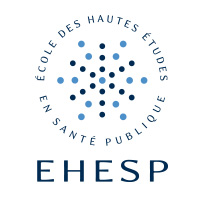Mining care trajectories using health administrative information systems: the use of state sequence analysis to assess disparities in prenatal care consumption
Résumé
Background - Pregnant women are a vulnerable population. Although regular follow-ups are recommended during pregnancy, not all pregnant women seek care. This pilot study wanted to assess whether the integration of data from administrative health information systems and socio-economic features allows identifying disparities in prenatal care trajectories.Methods - Prenatal care trajectories were extracted from the permanent sample of the French health insurance information system linked to the hospital discharge information system. The records of 2518 women who gave birth without complications in France in 2009 were analyzed. State sequence data analysis was performed to identify homogeneous groups of prenatal care trajectories. Socio-economic data were used to characterize their living environment.Results -We identified three groups of homogeneous prenatal care trajectories: (i) women with relatively high prenatal care consumption (~11 %), (ii) women with no prenatal care (~21 %), and (iii) women with an intermediate level of prenatal care (~66 %). Analysis of the socio-economic data demonstrated the association between disparities in prenatal care trajectories and the women’s living environment. Women with relatively high care consumption generally lived in socio-economically privileged areas (better education levels, employment status and housing conditions) compared with women with few or no prenatal care.Conclusions -Although ecological, our approach demonstrates that data from health administrative information systems could be used to describe prenatal care. However, more individual variables and an improvement of the data quality are needed to efficiently monitor the content and timing of prenatal care. Moreover, state sequence analysis, which was used in this context for the first time, proves to be an interesting approach to explore care trajectories. Finally, the integration of heterogeneous sources of data, including contextual information, might help identifying areas that require health promotion actions toward vulnerable populations, such as pregnant women.
Fichier principal
 Mining care trajectories using health administrative.pdf (793.02 Ko)
Télécharger le fichier
Mining care trajectories using health administrative.pdf (793.02 Ko)
Télécharger le fichier
Origine : Fichiers éditeurs autorisés sur une archive ouverte
Loading...

